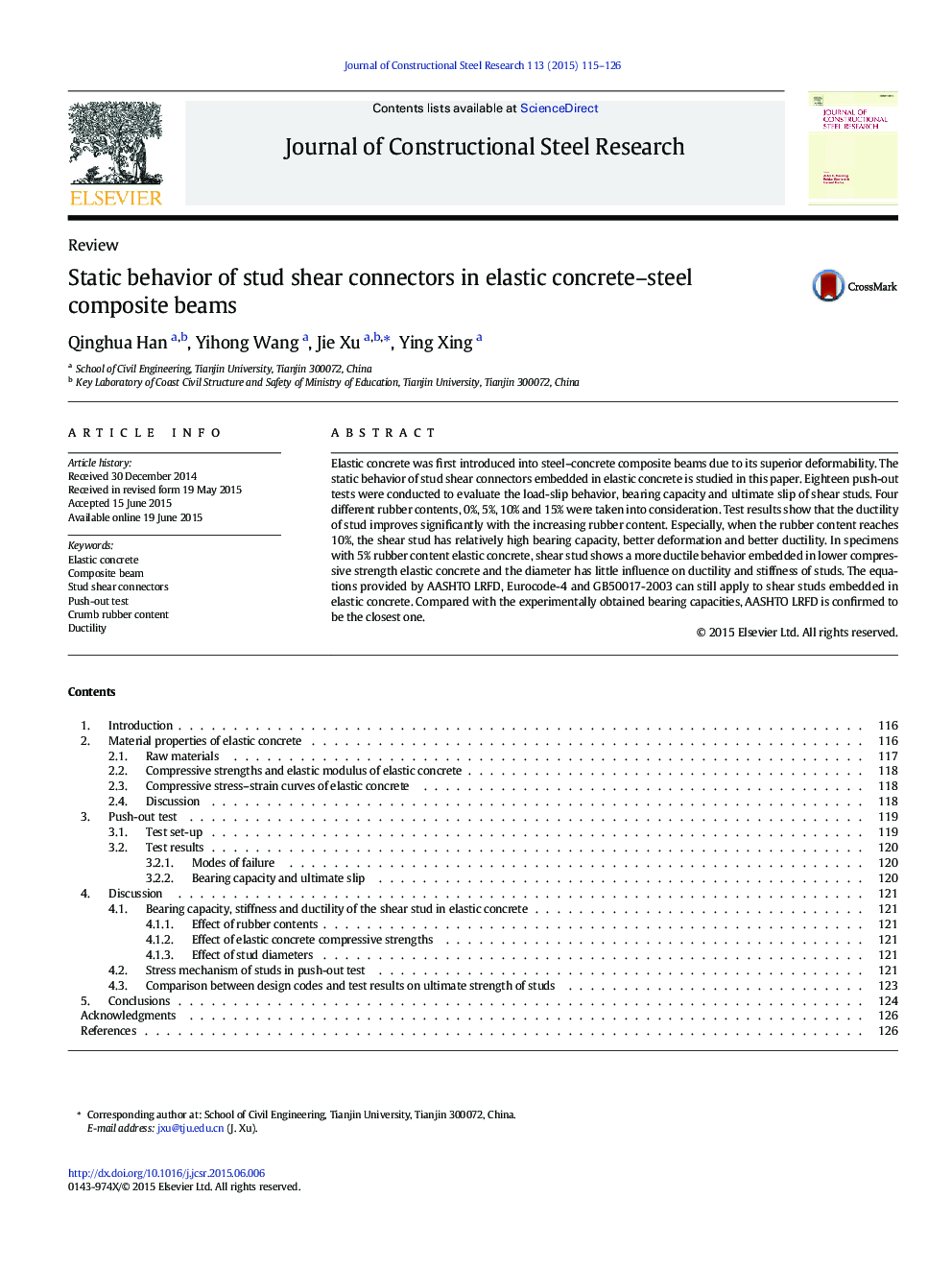| Article ID | Journal | Published Year | Pages | File Type |
|---|---|---|---|---|
| 284454 | Journal of Constructional Steel Research | 2015 | 12 Pages |
•Elastic concrete was firstly employed into the steel–concrete composite beams.•Shank failure of stud is the main failure mode in the 18 push-out tests.•Elastic concrete with 10% rubber content is optimal for the stud behavior.•Deformation capacity and ductility of studs were improved significantly.
Elastic concrete was first introduced into steel–concrete composite beams due to its superior deformability. The static behavior of stud shear connectors embedded in elastic concrete is studied in this paper. Eighteen push-out tests were conducted to evaluate the load-slip behavior, bearing capacity and ultimate slip of shear studs. Four different rubber contents, 0%, 5%, 10% and 15% were taken into consideration. Test results show that the ductility of stud improves significantly with the increasing rubber content. Especially, when the rubber content reaches 10%, the shear stud has relatively high bearing capacity, better deformation and better ductility. In specimens with 5% rubber content elastic concrete, shear stud shows a more ductile behavior embedded in lower compressive strength elastic concrete and the diameter has little influence on ductility and stiffness of studs. The equations provided by AASHTO LRFD, Eurocode-4 and GB50017-2003 can still apply to shear studs embedded in elastic concrete. Compared with the experimentally obtained bearing capacities, AASHTO LRFD is confirmed to be the closest one.
